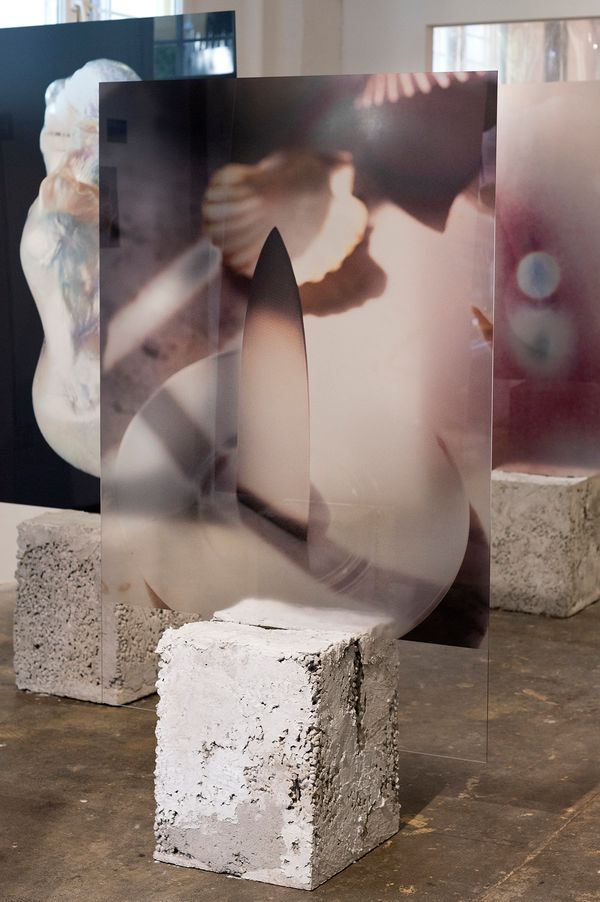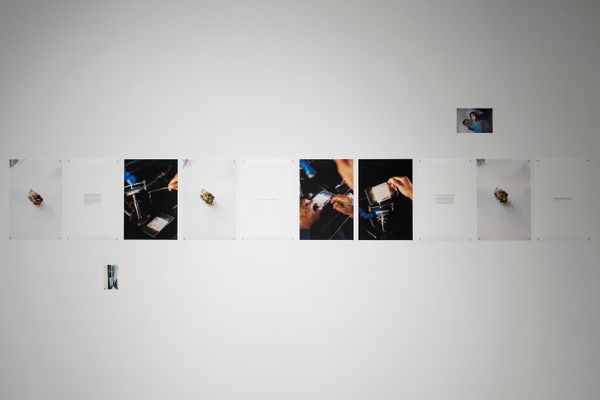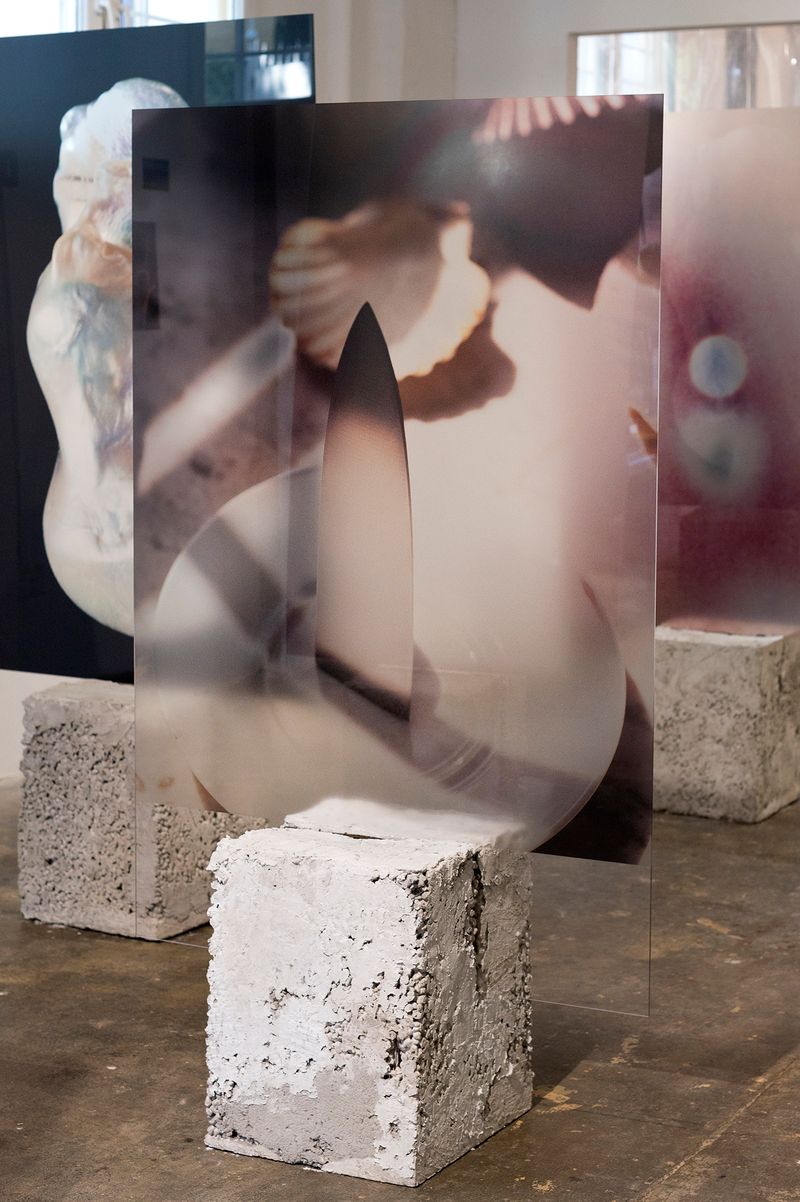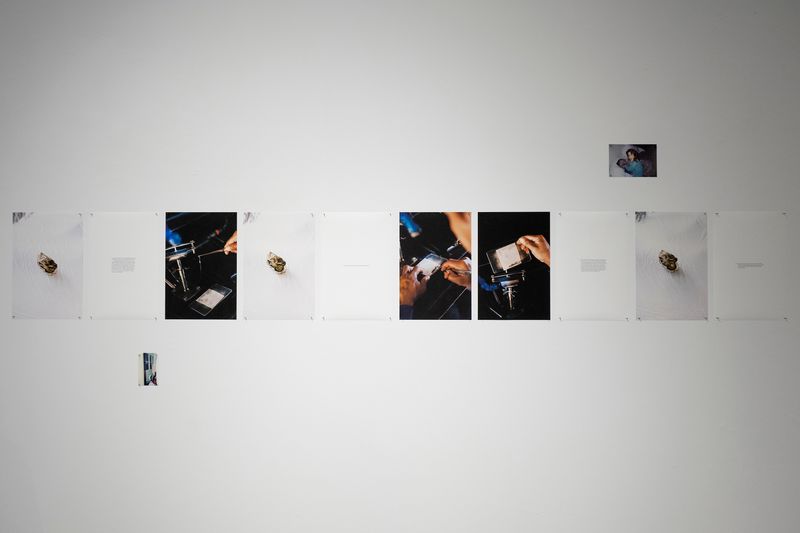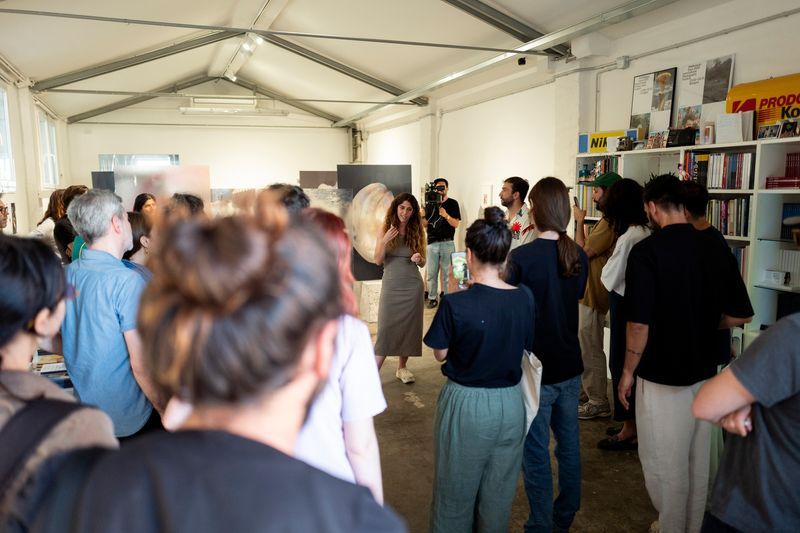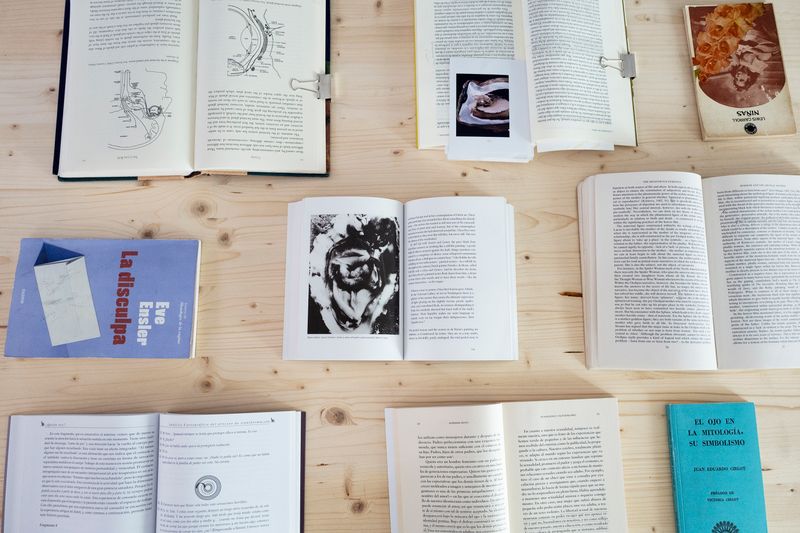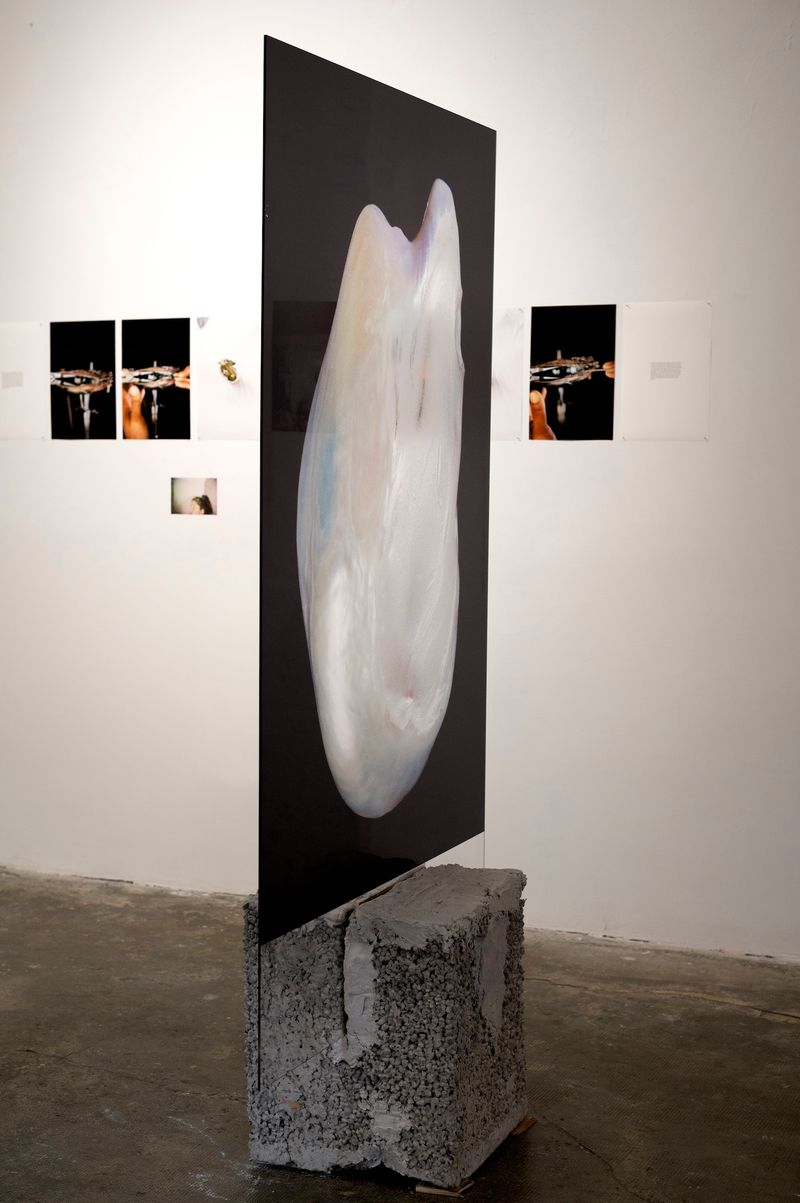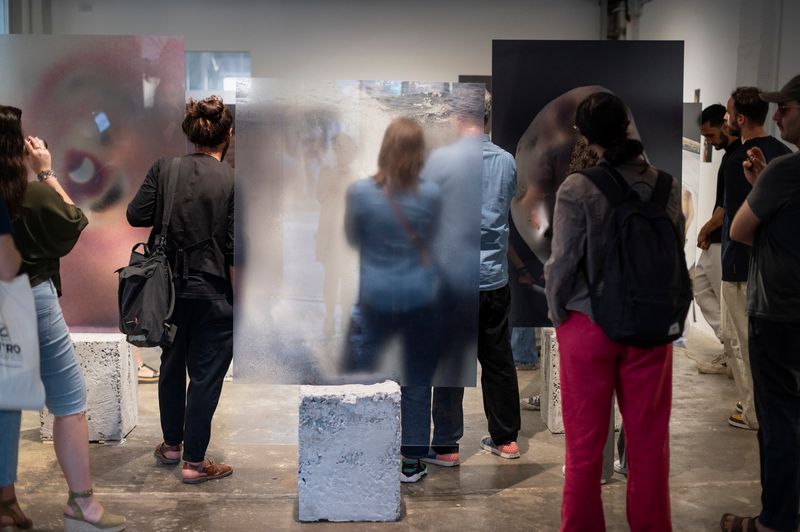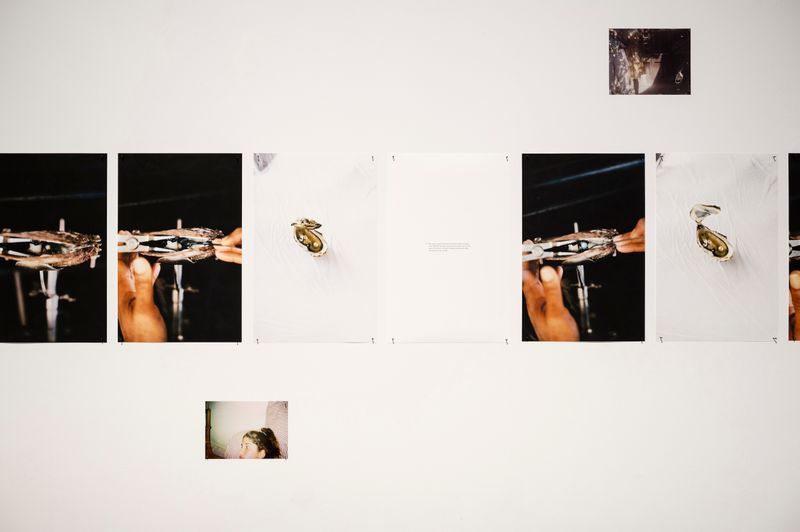Rita Puig-Serra On Her Exhibition Anatomy Of An Oyster At PhMuseum Lab
-
Published1 Oct 2024
-
Author
Anatomy Of An Oyster is about what we hold inside and don't have the courage to say. Thanks to the PhMuseum Women Photographers Grant, Puig-Serra's work was exhibited in Bologna, bringing together a sense of instability and equilibrium.
Mother-of-pearl, which will in time become the pearl, begins to form when a foreign element is introduced into the oyster. Starting from this metaphor, Catalan artist Rita Puig-Serra traces her childhood in an effort to process the abuses she suffered in her family as a child. It is an attempt to tell what needs to be told; a way of telling what could never be revealed to a now absent mother. And, at the same time, a way of telling it to herself.
In her work Anatomy Of An Oyster, she uses photographs, text and archival images to tell her story. She searches through family photos for details of the person who abused her. She gets as close as possible, an cathartic exercise conveying the violence of a look. She recreates a letter written to her best friend and later burned in a park. She embarks on a descent into an emotional, physical and analytical memory that serves to contextualize and make sense of the present. The pearl, which is an oyster’s autobiography, is the result of this exploration: a search carried out to find it, assimilate it, and finally remove it.
Ciao Rita, your background spans humanities, literature, graphic design, and photography. How do these fields converge in your visual research, and in your work Anatomy Of An Oyster more specifically?
I believe that having studied literature and graphic design, as well as having worked in the publishing world before entering photography, has led me to always conceptualize my projects in book format. Additionally, documentation is always a preliminary step that accompanies me throughout the entire project development. When it comes to structuring the project and creating a narrative, I feel that I draw from what I studied in my Literature Theory classes. Finally, the use of text in all the projects I have developed so far is significant.
In general, I tend to research extensively before I start shooting. This research is both emotional and intellectual. I read a lot on the subject, including both essays and fiction. I find inspiration and identify what I think can serve as the central core, symbol, or metaphor for the project I want to develop, and as soon as I have that, I begin to shoot. By considering the final format as a book from the very beginning, I try to create a preliminary narrative, which may later be modified, but is essential for me in thinking about the images the project needs. Thus, I prepare a clear list of images I want to capture. I then shoot them, although many end up being excluded. Nevertheless, throughout the entire creation process, which generally lasts for many years, I also shoot freely in parallel. Images emerge that, although they weren't specifically planned for that project, are deeply influenced by it since they were created during a time when all my energy was focused on the project. Often, these images also become part of the project.
In the specific case of Anatomy Of An Oyster: on one hand, there are the texts that make up the project—some with a more scientific tone that explain how pearls form within oysters—and others that are more intimate, where I reminisce about moments spent with my mother when I perhaps could have explained to her what was happening but did not. On the other hand, when the project is exhibited, it is accompanied by a selected bibliography of works that served as sources of documentation and inspiration during the creation of the project, and which illustrate, in a way that is essential to me, what I am trying to convey with my images and texts. These books are also displayed alongside the project and provide words for what I was unable to express.
Given the deeply personal nature of your work, how do you envision the public to respond? Did the idea of an audience have an impact in the conception and dissemination of the project?
In this particular project, I tried to distance myself as much as possible from external expectations and audience responses, in order to delve deeply into what I needed to express and bring forth. As you rightly point out, this is a project that is both intimate and personal, and as I progressed, I was extracting from within myself. I needed to be as honest and clear with myself as possible. This meant looking inward with great attention, without paying heed to external inputs.
Moreover, while developing the project, I encountered several individuals who confronted me with questions: Was it necessary to undertake this project? Was I prepared for it? What would people think of me? What position would this leave my mother in? These confrontations helped me clarify my desire to continue with the project and reinforced the importance of staying true to myself and my intuition. This meant focusing inward.
It was only during the editing phase that I began to consider an audience: someone would read this, and I needed to ensure that, despite the project's inherently cryptic theme and narrative, the reader could find certain clues that would allow them to weave a story and understand what I aimed to communicate.
Anatomy Of An Oyster was published by Witty Books in July 2023. How did you approach the translation of your work from the intimate format of a book to the public space of an exhibition?
As I mentioned at the beginning, I have always envisioned projects in the format of a book from the outset. A book that can later be transformed into an exhibition, but initially, it is the format in which the project is developed. Anatomy Of An Oyster was also conceived this way, but from the start, I was clear about one thing: when it came to the exhibition, I wanted both the pearls and the eyes of the person who abused me to be very large. I wanted the pearls to be the size of a person because, in a way, each baroque pearl could represent an individual who has suffered abuse. Regarding the eyes, I aimed to illustrate the weight that this gaze has carried for me.
I was also determined that the transition to the exhibition would maintain the two narrative threads that constitute the project: on one hand, the images of the oysters' work, alongside archival photos, which refer to something more earthly and aim to illustrate a second narrative thread composed of more symbolic images: the baroque pearls, the sea, the eyes. Finally, I wanted part of the books that had helped me document the project to be displayed in the exhibition.
Once it was decided that the exhibition would take place at the PhMuseum Lab, which was the project's first solo exhibition, I shared all of this with the team. We discussed the project and what each image meant to me, and they sent me a proposal that I found wonderful: the more symbolic images printed on plexiglass and arranged in the middle of the room, evoking the effects of memory when dissociation occurs, where you begin to remember through "flashes." Then, the images that refer to the work of the oyster to generate a pearl would be hung on the wall, alongside texts and archival images. Finally, we would have a room where the bibliography I mentioned would be displayed on a table.
Stuck in heavy and large concrete bases, the images printed on plexiglass appear to levitate in the room. Do you think the curatorial choices in the PhMuseum Lab exhibition have offered you a new perspective on your work?
Yes, I believe that when transferring the project to the wall, and especially thanks to the help and proposals from the entire PhMuseum team, the project has opened up to new perspectives, thereby uncovering aspects that, although they were part of the project, were not represented as effectively in the book. This is the case with the sense of simultaneous instability and balance that I think is conveyed exceptionally well by the images printed on those large plexiglass panels, which appear to float yet are supported by enormous and heavy concrete bases.
Another aspect that I believe offers a new perspective in the exhibition is the fact that these images printed on plexiglass can be viewed from both sides. The book emphasizes the act of looking and re-looking at the baroque pearls, for example, but the exhibition provides the opportunity to view them from both sides of the image. Additionally, the new arrangement presented in the exhibition establishes a different narrative from that of the book, which I think works wonderfully because it leads you, right from the moment you enter the room, to “collide” with various images of pearls, eyes, and seas, which in some way reach the spectator like memories might reach someone who has experienced trauma and subsequently dissociated: in the form of flashes. Finally, the room displaying the used books for the documentation of the project offers something that I chose not to include in the book, and I believe that at an exhibition level, it greatly enriches the experience and ultimately completes the project.
How would you describe your experience exhibiting in Bologna?
I have no words to describe how beautiful it was to exhibit in Bologna. This was my first solo exhibition of Anatomy Of An Oyster, and it has been a dream to do it here. I am especially grateful for the support of the entire PhMuseum team in conceptualizing, creating, and producing the exhibition, as well as the final result. I could not have imagined anything more beautiful and fitting for the project. Therefore, I am infinitely thankful.
What tips would you give to those interested in applying for the PhMuseum Women Photographers Grant?
This question is quite challenging, but what I always remind myself when working on a project or applying for a scholarship is: be honest and trust in the project and cherish it as if it were your child. After all, it is your creation to which you have devoted all your love, time, and hope. Not everyone will appreciate it in the same way, but do not lose your faith in the project, regardless of what happens to it.
Can you give us a glimpse of upcoming projects?
Right now, I am in a period of pause, trying to move Anatomy Of An Oyster forward while processing everything that has transpired with it. Once I feel ready, I would like to continue with a project that I started some time ago but set aside to focus on Anatomy. This project, unlike all my previous ones that have looked inward, looks outward and aims to address questions related to nature: answers to questions that my son might ask me.
----------
Anatomy of an Oyster was exhibited during PhMuseum Days 2024 thanks to the PhMuseum Women Photographers Grant. As the PhMuseum 2024 Women Photographers Grant is currently open for submissions, this year another photographer will be invited to show their work at PhMuseum Lab in Bologna, Italy. To learn more and apply, visit phmuseum.com/w24. Final Deadline: 10 October.
----------
Rita Puig-Serra is a Barcelona-based photographer. With a background in Humanities and an MA in Comparative Literature, she later studied Graphic Design and Photography. Today, Puig-Serra works on personal projects alongside various commercial assignments. Her first project, Where Mimosa Bloom, was published by Editions du Lic in 2014. Anatomy Of An Oyster has been published by Witty Books in 2023. Her work, closely related to literature, revolves around the concept of identity and how it is redefined throughout our life. She also explores the essence of human relationships and the influence that love, death, luck or memories have on the construction of ourselves.
PhMuseum Days is the International Photography Festival curated and organized by PhMuseum. The fourth edition took place from 12 to 15 September at DumBO’s Spazio Bianco in Bologna and in other places in the city, hosting exhibitions, talks, screenings, portfolio reviews and a section dedicated to independent publishing.
